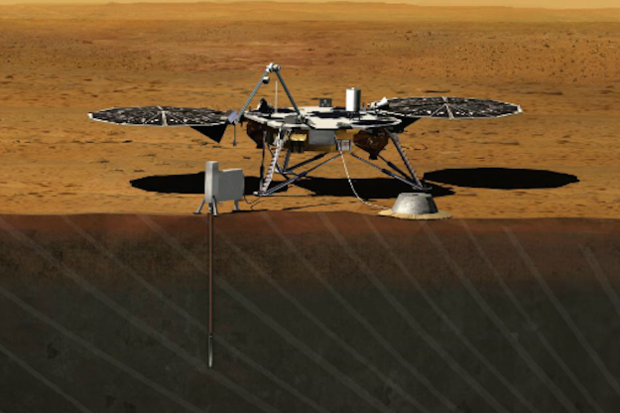-
Tips for becoming a good boxer - November 6, 2020
-
7 expert tips for making your hens night a memorable one - November 6, 2020
-
5 reasons to host your Christmas party on a cruise boat - November 6, 2020
-
What to do when you’re charged with a crime - November 6, 2020
-
Should you get one or multiple dogs? Here’s all you need to know - November 3, 2020
-
A Guide: How to Build Your Very Own Magic Mirror - February 14, 2019
-
Our Top Inspirational Baseball Stars - November 24, 2018
-
Five Tech Tools That Will Help You Turn Your Blog into a Business - November 24, 2018
-
How to Indulge on Vacation without Expanding Your Waist - November 9, 2018
-
5 Strategies for Businesses to Appeal to Today’s Increasingly Mobile-Crazed Customers - November 9, 2018
NASA calls off Mars mission; not enough time to fix leak
The problematic instrument is a seismometer provided by France s Centre National d Etudes Spatiales (CNES), created to measure ground movements as small as the diameter of an atom.
Advertisement
According to the United States space agency, a leak earlier this year that had prevented the seismometer from retaining vacuum conditions was repaired, but after the final sealing of the instrument, another leak was detected.
NASA managers and French designers of the instrument said Tuesday they must now decide whether the pouch’s vacuum seal needs to be repaired, redesigned or the mission scrapped.
During a test Monday at ultracold temperatures, about minus 50 degrees Fahrenheit, a leak was again observed.
“The vacuum issue is the only thing that was standing between us and launch”, Bruce Banerdt, InSight’s principal investigator at the Jet Propulsion Laboratory, told CNN.
The InSight mission is considered to be significant before NASA’s planned Mars exploration programme, which involves sending humans to the Red Planet.
“The whole project team has been giving it everything they’ve got for many months to try to make this launch opportunity, so we are understandably disappointed”.
John Grunsfeld, NASA’s science mission chief said that the launch date was very close, and it was not possible to fix the leak in time for the launch.
“We push the boundaries of space technology with our missions to enable science, but space exploration is unforgiving, and the bottom line is that we re not ready to launch in the 2016 window”, he said in a statement.
Mars will give a better understanding of Earth’s early development because the crust and the mantle of the red planet have been undisturbed as compared to Earth.
The uncrewed Exploration Mission-1 (EM-1) is the next space flight of Orion that will be launched into a distant retrograde orbit around the moon in 2018. With the 2016 launch cancelled, the spacecraft will be returned from Vandenberg to Lockheed’s facility in Denver. Scientists hoped observations made by Insight would provide new clues as to how Mars first formed.
NASA officials said the delay of the InSight mission wouldn’t affect the schedule of any other missions to Mars.
The Heat Flow and Physical Properties Package (HP3), another major instrument of InSight has been supplied by German Aerospace Center (DLR). The mission will launch during the period March 4 to March 30, 2016, and land on Mars Sept. 28, 2016.
Advertisement
The InSight stationary lander is based on NASA’s Phoenix lander, which set down at the Martian North Pole in 2008, and is designed for a 720-day primary mission near the Martian equator.




























